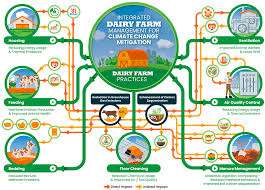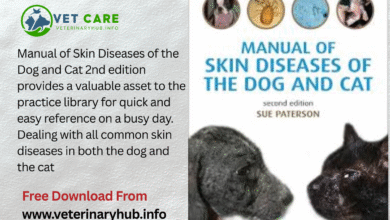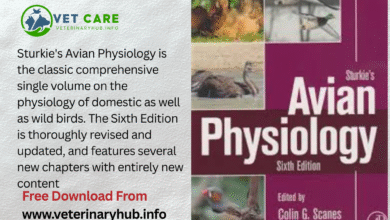Binding of different forms of lipopolysaccharide and gene expression in bovine blood neutrophils

This study investigates how different forms of lipopolysaccharide (LPS), a component of bacterial cell walls, bind to bovine blood neutrophils and influence gene expression. It aims to understand the immune response mechanisms in dairy cattle, particularly how neutrophils recognize and react to various LPS structures at the molecular level
All Veterinary pdf books free download here: Library
The innate immune system is the first line of defense in animals against invading pathogens. Among the key players in this system are neutrophils, the most abundant type of white blood cells in circulation. In bovines, neutrophils are crucial for detecting, engulfing, and destroying pathogens, particularly during bacterial infections such as mastitis and metritis. One of the most potent bacterial molecules that elicits a strong immune response is lipopolysaccharide (LPS), a major component of the outer membrane of Gram-negative bacteria.
This study explores how different structural forms of LPS interact with bovine blood neutrophils, particularly focusing on binding efficiency and the resultant gene expression patterns. The central goal is to understand how structural variations in LPS—derived from different bacterial strains or modified in laboratory settings—can influence immune recognition and activation in cattle.
Background and Significance
LPS is composed of three major components: the lipid A region (responsible for endotoxic activity), the core oligosaccharide, and the O-antigen polysaccharide. Differences in these structures can significantly influence how LPS is recognized by immune receptors such as Toll-like receptor 4 (TLR4). In humans and rodents, LPS-TLR4 interactions have been widely studied, but much less is known about these processes in bovine species, despite their importance in agriculture and food production.
Neutrophils are equipped with pattern recognition receptors (PRRs) such as TLR4 that detect microbial components like LPS. When LPS binds to these receptors, it initiates a cascade of intracellular signaling that leads to the activation of genes involved in inflammation, immune defense, and cellular stress responses. Understanding how variations in LPS affect these pathways is critical for designing better therapeutic strategies and improving immune resilience in livestock.
Objectives of the Study
The main objectives of this research are:
- To examine the binding capacity of different LPS forms to bovine neutrophils.
- To evaluate the gene expression response of neutrophils following LPS binding.
- To identify any structure-function relationships between LPS form and immune response.
- To contribute knowledge that can improve the management of infectious diseases in cattle.
Materials and Methods
The study utilized ex vivo blood neutrophils isolated from healthy bovine donors. Different forms of LPS were used, including:
- Smooth LPS (S-LPS): Contains the full O-antigen.
- Rough LPS (R-LPS): Lacks the O-antigen and has a truncated core.
- Lipid A-only LPS: Comprises only the biologically active lipid portion.
Each type of LPS was incubated with neutrophils for a specific time under controlled laboratory conditions. The binding of LPS to neutrophils was measured using fluorescently labeled LPS and flow cytometry. Following incubation, total RNA was extracted from the neutrophils and used to analyze differential gene expression using quantitative PCR and RNA-sequencing technologies.
Key Findings
1. Differential LPS Binding:
The study found that S-LPS exhibited the highest binding affinity to bovine neutrophils, likely due to its complete O-antigen structure facilitating receptor interaction. R-LPS and lipid A-only forms showed significantly less binding, suggesting that the full LPS structure enhances recognition and attachment.
2. Gene Expression Patterns:
The binding of LPS triggered the expression of various pro-inflammatory genes, such as:
- TNF-α (Tumor Necrosis Factor-alpha)
- IL-1β (Interleukin-1 beta)
- IL-8 (CXCL8)
- NOS2 (inducible nitric oxide synthase)
Interestingly, the level of expression differed depending on the LPS form used. S-LPS induced the strongest gene expression, followed by R-LPS and lipid A. This suggests that the immune response intensity is directly influenced by the structural complexity of the LPS.
3. Immune Modulation and Tolerance:
The study also observed signs of LPS-induced tolerance, where repeated exposure to LPS reduced the responsiveness of neutrophils. This is a protective mechanism to prevent excessive inflammation, but it may also have implications for the ability of cows to respond to ongoing infections.
4. Receptor and Signaling Pathway Activation:
TLR4 and its co-receptors (MD-2 and CD14) were confirmed to be involved in LPS detection in bovine neutrophils. Additionally, downstream signaling molecules like NF-κB and MAPKs were activated, leading to transcriptional changes.
Implications and Applications
The study provides crucial insights into how bovine neutrophils recognize and respond to structurally different LPS molecules, which has several practical implications:
- Disease management: Understanding LPS responsiveness can aid in developing better strategies for preventing and treating bacterial infections in dairy cattle.
- Vaccine development: Identifying LPS structures that most effectively stimulate immune responses can improve adjuvant design.
- Animal breeding and genetics: Knowledge of innate immune responses at the cellular and molecular level can contribute to genetic selection for disease-resistant cattle.
- Reducing antibiotic use: Enhancing natural immunity may reduce reliance on antibiotics, aligning with goals for antimicrobial stewardship in agriculture.
Conclusion
This study highlights the critical role of LPS structure in shaping neutrophil responses in bovines. By demonstrating that different LPS forms elicit varied binding and gene expression outcomes, the research underscores the complexity of innate immunity in cattle. The findings are a valuable addition to the field of veterinary immunology and pave the way for innovations in livestock health and disease prevention.




